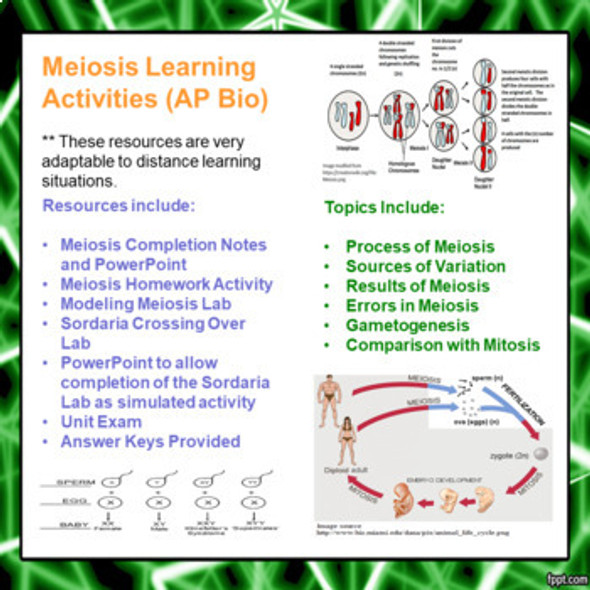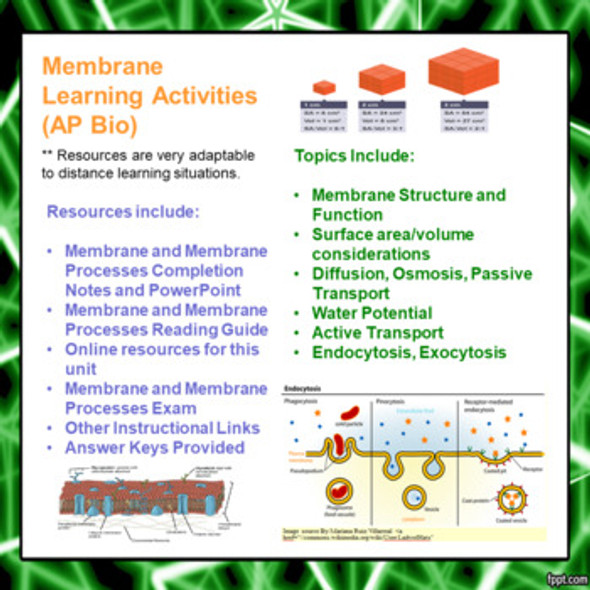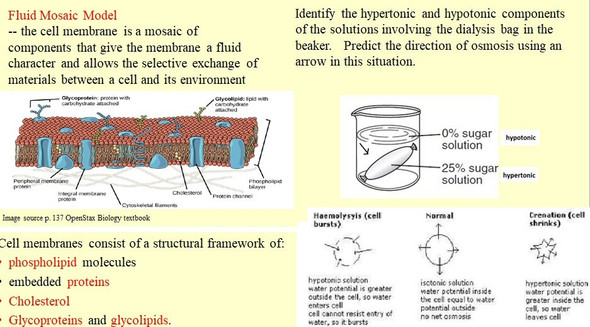Aspects of Biotechnology Learning Activities for AP Biology
- Bulk Pricing:
- Buy in bulk and save
- Contributor:
- Monday's Rescue
- Grade Level:
- 9-12
- Product Type:
- Learning Package (Notes, PowerPoint, Homework)
- File Type:
- doc, pdf, ppt
- Pages:
- 48
- Answer Key:
- Yes
Description
This lesson package is contained in a zip file. It contains different activities (48 pages of student handouts and a PowerPoint with a total of (68 slides) which can be used to compose a unit for AP Biology or advanced Biology students on Aspects of Biotechnology. Portions of this unit would be suitable in a forensic class as well. Concepts discussed and evaluated include the concepts of restriction enzymes and their use, electrophoresis, RFLP, PCR, Southern Blotting, microarrays, cloning, genetic engineering, gene therapy and many other topics. The bioethics of genetic technologies is considered.
The file contains two homework or in class activities if you have a flipped classroom setup, as well as a comprehensive 50 question examination on these topics. A resource guide to useful materials at the University of Rochester Life Sciences Learning Center website and other websites is included as well. The resource links were current as of July 1, 2020.
This lesson packet contains a listing of the learning goals, common core learning standards, NGSS learning standards and the AP Biology performance indicators addressed in these materials. These are included in the packet and at the end of the description of this lesson.
Most documents are included in both word as well as pdf format to allow editing for specific teacher needs. The learning guides/assignments contain links to online resources to support student learning. These learning materials are well suited for a distance learning situation.
Answer keys are included for all activities. All documents with the exception of the PowerPoint are included in both word (to allow you to easily edit the document to suit your needs) and pdf format.
The specific contents of the learning package includes the following items (the page count for these items are actual student handouts as answer key page counts are not included):
- Aspects of Biotechnology Objectives correlated to the ETS, NGSS and Common Core standards (2 pages) in word and pdf format
- Aspects of Biotechnology Completion notes (24 pages) in word and pdf format
- PowerPoint to accompany the DNA Structure and Replication Completion notes (includes two closure/ticket out activities with answers) (68 slides)
- Aspects of Biotechnology Homework (23 questions) in word and pdf (4 pages)
- Aspects of Biotechnology Exam (50 mixed format questions) with Key in word and pdf format (11 pages)
- Reading worksheet to accompany the online Openstax Biology textbook or other textbook of your choice (12 pages/56 written response questions)
- Resource Links in word and pdf format (1 page)
Aspects of Biotechnology Objectives ETS
Enduring Understanding
IST-1 Heritable information provides for continuity of life.
Learning Objective
IST-1.P Explain the use of genetic engineering techniques in analyzing or manipulating DNA.
Aspects of Biotechnology Learning Goals
Upon the completion of this unit the student will be able to:
1. explain how restriction enzymes cut DNA samples.
2. describe the difference between a blunt end and a sticky end using restriction enzymes.
3. explain why restriction enzymes are needed to prepare DNA for electrophoresis.
4. discuss the process of gel electrophoresis.
5. explain what is meant by a VNTR.
6. explain the use of probes in detecting VNTRs.
7. describe the cause of Huntington's chorea in reference to the number of CAG VNTRs on chromosome four.
8. describe the role of restriction enzymes and ligase in producing a recombinant DNA molecule.
9. briefly discuss the use of plasmid and phage vectors.
10. describe the function of reverse transcriptase in retroviruses
11. discuss why PCR is often needed in molecular biology studies.
12. explain the importance of DNA synthesis and sequencing to modern studies of eukaryotic genomes.
13. describe how bacteria can be induced to produce eukaryotic gene products such as interferon and human insulin
14. discuss the uses of the human genome project.
15. discuss some uses of RFLP analysis and explain what this is.
16. describe how recombinant DNA technology can have medical applications such as diagnosis of genetic disease, development of gene therapy, vaccine production, and development of pharmaceutical products.
17. describe how gene manipulation has practical applications for agriculture.
18. discuss some ethical aspects of recombinant DNA studies and the biotechnology industry.
NGSS Standard
Students who demonstrate understanding can:
HS-LS1-1. Construct an explanation based on evidence for how the structure of DNA determines the structure of proteins which carry out the essential functions of life through systems of specialized cells.
Common Core State Standards Connections:
ELA/Literacy
RST.11-12.1 Cite specific textual evidence to support analysis of science and technical texts, attending to important distinctions the author makes and to any gaps or inconsistencies in the account.
WHST.9-12.2 Write informative/explanatory texts, including the narration of historical events, scientific procedures/ experiments, or technical processes.
WHST.9-12.9 Draw evidence from informational texts to support analysis, reflection, and research.
Terms of Use
- Purchase of the product is for classroom use by the purchaser only. It is a violation for individuals, schools, and districts to redistribute, sell, or post this item on the Internet or to other individuals.
This work is licensed under a Creative Commons Attribution-NonCommercial-ShareAlike 4.0 International License.
Please feel free to browse any of the other products in my store.














